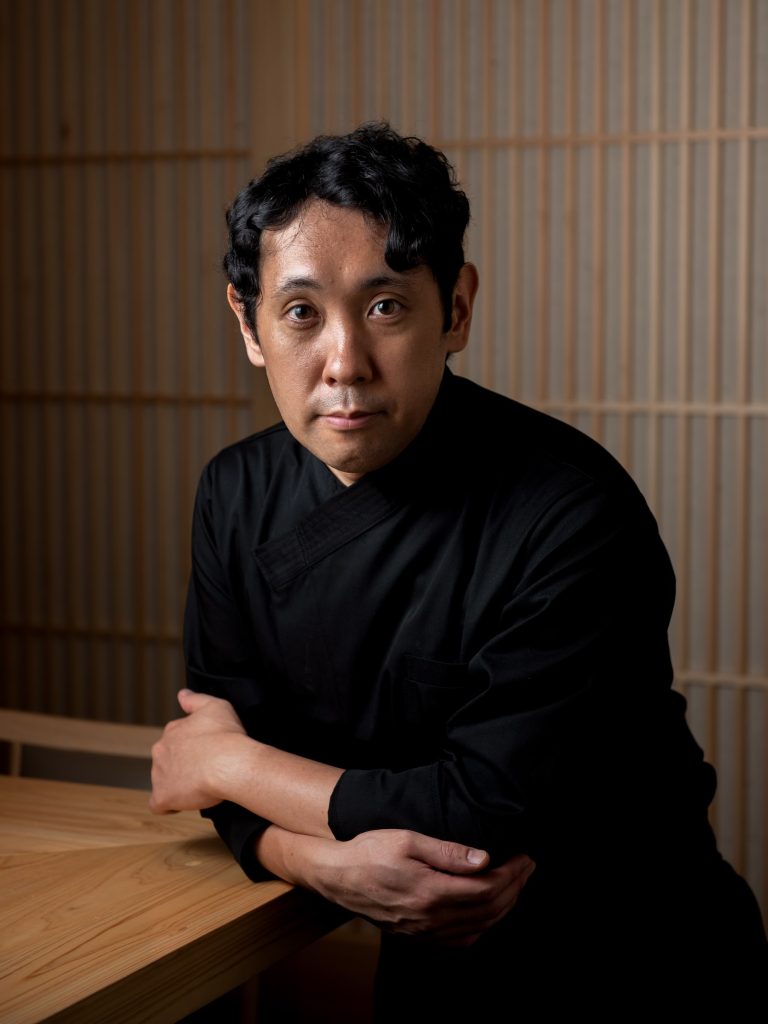Hong Kong has sushi omakase restaurants aplenty—but what about sukiyaki omakase?
Sukiyaki, widespread and beloved in Japan as a comfort dining option, is a nabemono hot-pot-style culinary tradition that has been relegated to the backseat in favour of the more globally popular ramen, yakitori, curry, and tempura, and even shabu-shabu. Recently, however, the food form has found stronger footing on Hong Kong shores with a number of new restaurant openings specialising in the art of sukiyaki. Among them, Sukiyaki Nakagawa is taking the art of this cuisine to the next level.

First, a bit of history: sukiyaki can trace its roots back to the mid-1800s, where a Meiji Restoration-era hot-pot establishment in Tokyo’s Shiba district called Nakagawa—this restaurant’s namesake and inspiration—pioneered the dish, in which thinly sliced meat and vegetables are simmered at the table in a sweet blend of soy sauce, sugar, and mirin in a shallow iron pan over a fire. It has since become part of the Japanese dining vernacular, often enjoyed in the wintertime during cold weather or at gatherings.

Itagaki Kazuyuki, the gastronomic talent behind the modern-day Nakagawa, leverages his 25 years of experience to bring the Kansai method of sukiyaki preparation to the fore, an approach that differs from the Kanto practice as beef is first browned with sugar before liquid ingredients and vegetables are added—a hallmark of the chef’s menus. Wagyu fat and Fukuoka white sugar are the key foundational ingredients that jumpstart the caramelisation of the meat, used to grease the pan before a secret, nuanced seasoning blend—made with soy sauce from the birthplace of the condiment, Yuasa in Wakayama Prefecture—is added to the increasingly flavourful mix.
Sukiyaki Nagakawa’s main draw is the rare trio of Wagyu beef on its menu: the highly coveted Matsusaka, Oita Wagyu, and Jinnai Wagyu Aka from Hokkaido, a lean red meat. Matsusaka is renowned for its high fat-to-meat ratio, resulting in alluring marbling. Bungo black cattle from Oita, meanwhile, boast a century-old heritage and tender meat through a diet of rice and beer mash. In contrast, Jinnai Wagyu Aka has a distinctly muscular characteristic without compromising on tenderness. Preserving the rich flavour of the Wagyu, the meat is served with two dips, one steamed, one meringue-like, made from vitamin-E-rich Kosawari Tamago eggs from Hyogo.

On the multi-course tasting menus, seasonal delicacies like the Akita cold Inaniwa udon dressed in a lime dashi blends smooth, silky noodles with a light, sudachi citrus-infused fish broth make for a refreshing pick-me-up. Steamed egg custard, miso soup, in-season sashimi, and a selection of rotating appetisers complement the meat dishes, which, aside from beef from Japan’s prized cattle-rearing regions, also feature Yume no Daichi pork from Hokkaido, French duck breast, and New Zealand lamb. A Wagyu beef and sea urchin with egg sauce rice, cooked in a Japanese claypot, is a rich conclusion to the meal. Yumepirika rice, a Hokkaido speciality, is expertly prepared in a Yokkaichi Banko Yaki artisanal pottery piece, an exceptionally heat-resistant ware.

Despite the traditional origins, Itagaki is no stranger to open-minded interpretations of what shape a sukiyaki meal can take. Consider the decadent goose liver sukiyaki on soy milk and egg toast, a staple of the dinner and lunch menus; French goose liver is pan-fried in a foam of sukiyaki sauce and crowned atop a soft piece of bread, fusing Eastern and Western influences to achieve an unconventional result.

Itagaki presents his meticulous approach to sukiyaki in an intimate space designed by CSC Collective, which retains clear elements of the familiar omakase restaurant formula. Under a ceiling adorned with straw-mat detailing and washi-papered contemporary surroundings, Nakagawa’s open kitchen is framed by a hinoki cypress counter, seating just 15, bringing the chef and diners into a lively interchange while sharing in the dining experience. Chef and sommelier Ho Wai-leung’s sake selection spans labels from the Noguchi Naohiko Sake Institute, led by toji (master brewer) Noguchi Naohiko, fondly referred to as the “god of sake brewing.”
Shop B, 3/F, Cubus, 1 Hoi Ping Road, Causeway Bay, Hong Kong
Tel: (+853) 5394 3688
All images courtesy of Sukiyaki Nakagawa.









